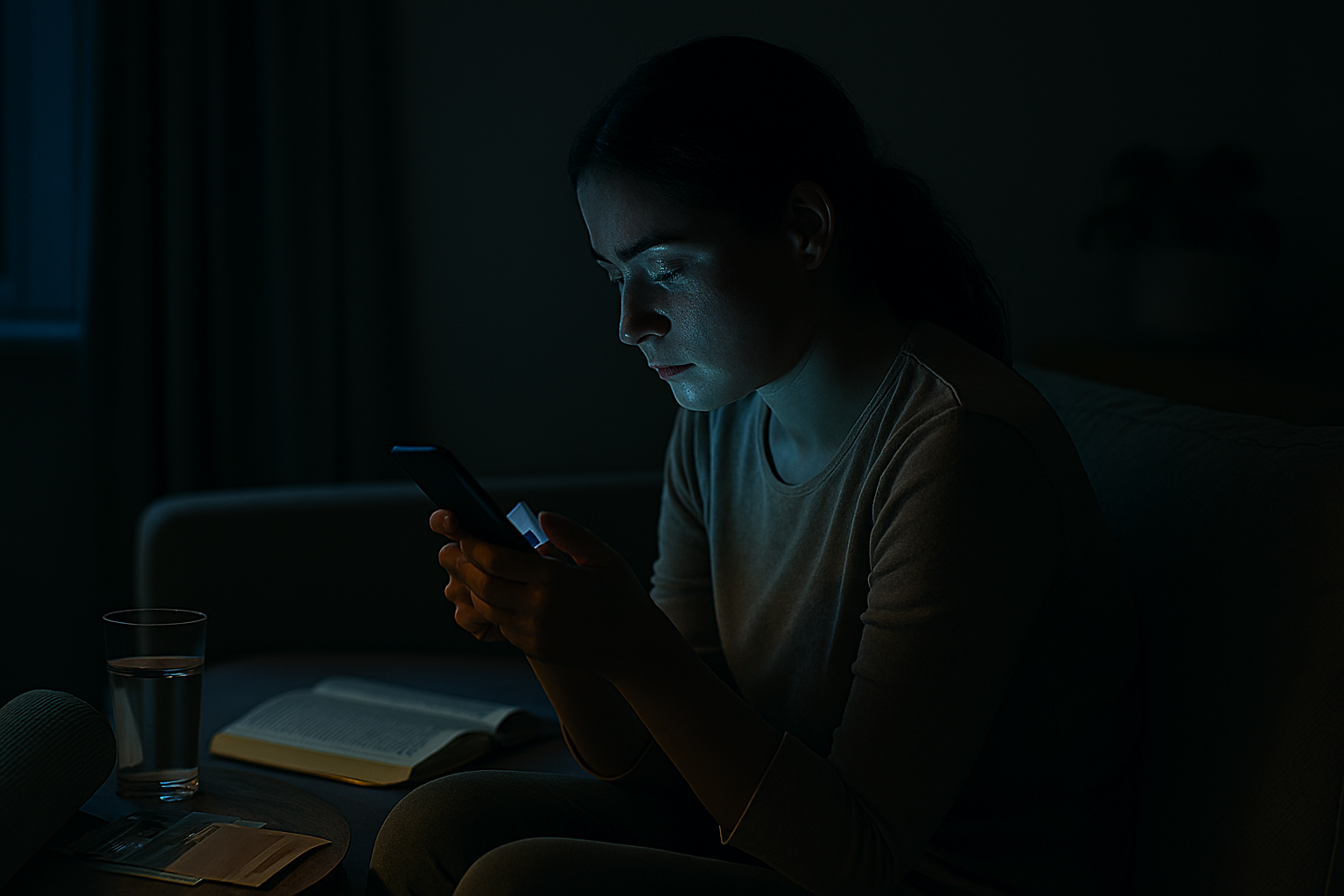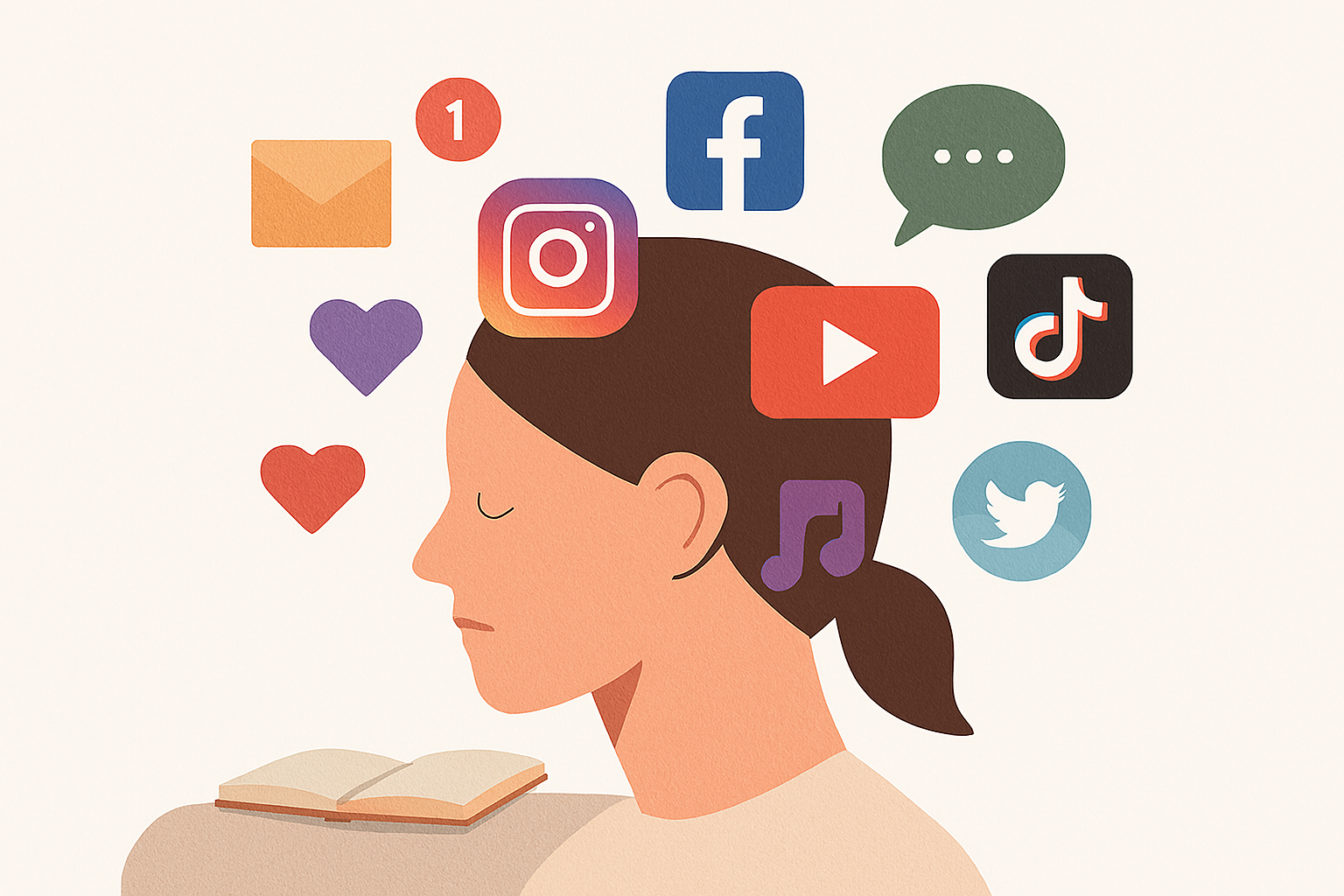Digital Wellness: 7 Practical Ways to Set Healthy Tech Boundaries

I found myself doing it again last night: the mindless thumb scroll through social media while a neglected novel sat beside me. Three hours had vanished into the digital void. My eyes burned from blue light, my neck ached from looking down, and despite connecting with dozens of people online, I felt strangely isolated. The irony was not lost on me. I had planned a relaxing evening to recharge but ended up more depleted than before.

In our hyper-connected world, many of us experience this daily tension. We love the convenience technology brings, yet increasingly sense it is consuming more than it is giving. Is all this screen time silently draining our well-being?
What Is Digital Wellness?
Digital wellness is not about throwing your smartphone into the nearest lake. It is the mindful relationship we create with our technology that supports, rather than diminishes, our overall health and happiness. It means technology serves your life goals and values instead of distracting from them. The goal is not digital abstinence but digital intention, using technology as the powerful tool it is, without letting it use us.
The Unseen Effects of Screen Overuse
Our devices are so integrated into our lives that we often miss their subtle impacts on our psychological well-being:
- Fragmented Attention: Constant interruptions from notifications create "switch-tasking," which exhausts the brain more quickly than sustained focus.
- Stress Amplification: Constantly checking news, work emails, or social media activates our stress response system repeatedly throughout the day.
- Sleep Disruption: Evening screen use suppresses melatonin production, affecting not just sleep quantity but crucial deep sleep quality.
- Comparison Fatigue: Social media algorithms excel at showing us curated highlights from others' lives, which can contribute to increased anxiety and diminished self-esteem.
- Diminished Presence: The mere presence of a phone during face-to-face conversations can measurably reduce our sense of connection and empathy.

Why We Struggle to Disconnect
Understanding why disconnection feels so challenging helps us approach digital boundaries with more self-compassion. Our devices are engineered to be compelling, delivering unpredictable rewards (likes, messages) that trigger dopamine release in our brains. This, combined with a fear of missing out (FOMO) and the blurring of work-life boundaries, makes logging off a complex task. Acknowledging these challenges is the first step toward creating sustainable boundaries.
7 Practical Tips to Set Digital Boundaries
Creating healthy digital boundaries does not mean sacrificing connection. These strategies help you reclaim your time and attention while staying meaningfully engaged.
1. Practice the 20-20-20 Rule
For every 20 minutes of screen time, look at something 20 feet away for 20 seconds. This simple practice not only rests your eyes but serves as a mindfulness bell, bringing awareness to your technology use.
2. Create Tech-Free Zones
Designate specific areas in your home as technology-free sanctuaries. The dinner table and bedroom are excellent starting points. Keep charging stations outside the bedroom to eliminate the temptation of checking your phone first thing in the morning or last thing at night.
3. Schedule Intentional Connection Time
Rather than reactively checking social media, schedule specific times for meaningful online engagement. This might mean 20 minutes in the morning for a support group or an evening video call with family. This transforms technology from a distraction into a true connection tool.
4. Use Technology to Manage Technology
Leverage built-in tools like Screen Time (iOS) or Digital Wellbeing (Android) to set app timers. These tools provide data on your usage and gently nudge you when you have reached self-determined limits. Third-party apps like Forest or Freedom can also provide support.

5. Curate Your Digital "Nutrition"
Just as we read nutritional labels on food, develop awareness of your digital intake. Ask yourself: Does this content energize or drain me? Does this interaction add value? Unfollow accounts that consistently trigger comparison or negative emotions. Curate your feeds to support your wellbeing.
6. Implement Transition Rituals
Create small rituals that help your brain transition between connected and disconnected states. Before checking email in the morning, take three deep breaths. Before closing your laptop for the day, write down three accomplishments. These micro-rituals help your nervous system recognize the boundaries.
7. Adopt a "Digital Sabbath"
Start with just three to four hours once a week without screens. Use this time for nourishing activities like outdoor walks, reading physical books, or in-person connections. Many report that this regular reset transforms their relationship with technology during connected times.
Redefining Your Relationship with Technology
Implementing new boundaries can feel awkward at first, but the long-term benefits are profound. You may initially feel a sense of anxiety when you intentionally leave your phone behind for a walk, a phenomenon known as "nomophobia" (no-mobile-phone-phobia). This is a normal response from a brain that has been trained to seek constant stimulation.
The key is to push through this initial discomfort. When you do, you begin to rewire those neural pathways. You start to notice the world around you more vividly: the feeling of the breeze, the sounds of your neighborhood, the taste of your food. This return to the present moment is one of the greatest rewards of digital wellness. It is not about what you are missing online, but about what you are gaining in your real, tangible life.
As you practice these boundaries, you will notice a return of deeper conversations, improved sleep, greater creativity, and a renewed sense of agency over your time and attention. Digital wellness is not about missing out, it is about tuning in to what truly matters.





